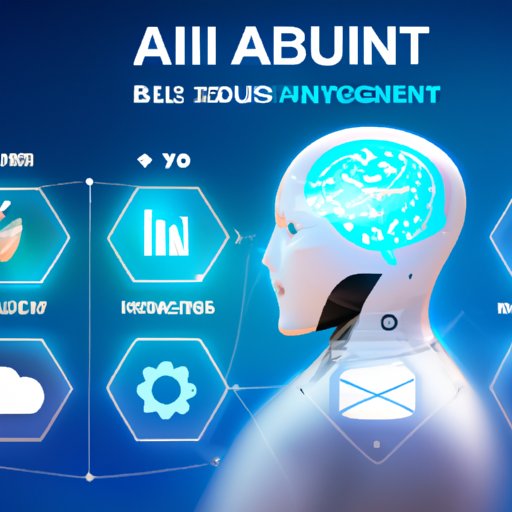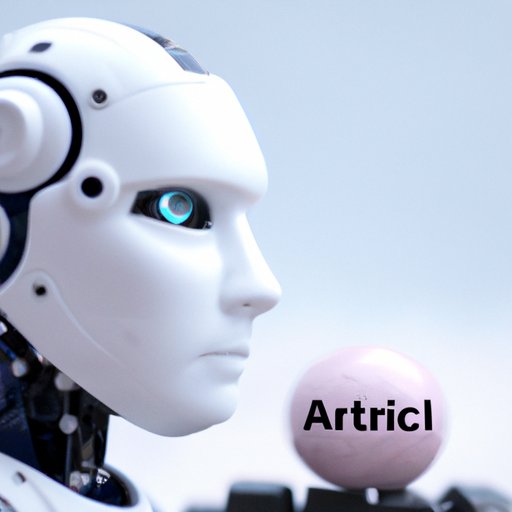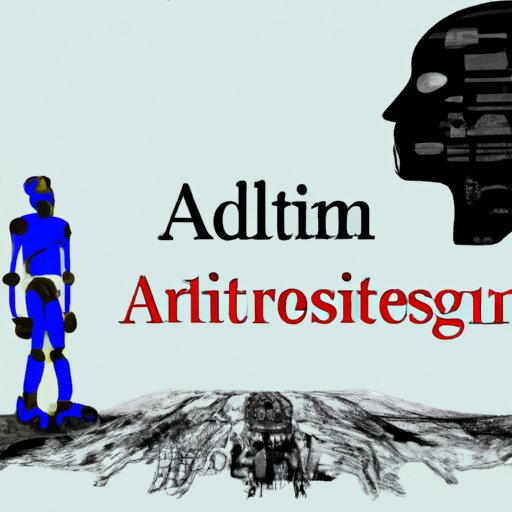Introduction
Artificial intelligence (AI) is a branch of computer science that deals with the creation of intelligent machines that can think, learn, and act like humans. AI has been around for decades, but it has become increasingly popular in recent years due to advances in computing power and machine learning algorithms. While there are many potential benefits to incorporating AI into our lives, there are also some drawbacks and risks that must be considered.
A Comparison of Artificial Intelligence and Human Intelligence
The most obvious difference between AI and human intelligence is that AI is entirely machine-based, while human intelligence is a combination of physical and mental abilities. AI systems have the ability to process large amounts of data quickly and accurately, whereas humans rely more on intuition and experience. AI is also able to automate complex tasks that would otherwise require human intervention.
One of the unique capabilities of human intelligence is the ability to make decisions based on ethical considerations. While AI systems are capable of making decisions, they lack the capacity to consider ethical implications. This means that any decisions made by AI systems may not take into account the potential impact on people or the environment.
Another advantage of AI over human intelligence is that AI systems can operate 24/7 without breaks or vacations. This allows businesses to increase their productivity and efficiency while reducing costs associated with hiring and training staff.

The Benefits and Drawbacks of Using AI in Business
AI has the potential to revolutionize the way businesses operate. The main benefit of using AI in business is cost savings. By automating certain processes and tasks, businesses can reduce their labor costs and increase their profits. Additionally, AI can help businesses identify new opportunities and make better decisions faster than ever before.
However, there are also some drawbacks to using AI in business. One potential issue is the potential for errors. AI systems are only as good as the data they are given, so if the data is inaccurate or incomplete, the results may be flawed. Additionally, AI systems can be expensive to implement and maintain, which can be a major drawback for small businesses.

Exploring the Potential Risks of AI
One of the most concerning risks of AI is job losses. As AI systems become more advanced, they will be able to replace humans in many roles, resulting in large scale unemployment. Additionally, AI systems can be vulnerable to malicious attacks, which could result in data breaches and other security issues.
Another potential risk of AI is the unintended consequences of its use. AI systems are designed to optimize certain outcomes, but they are not always able to anticipate how their decisions will affect people and the environment. This could lead to unforeseen problems and negative impacts on society.
Examining the Impact of AI on Society
AI has the potential to drastically change the way we interact with each other and the world. One of the most significant impacts of AI is on social interactions. AI systems are becoming increasingly capable of understanding human behavior and emotions, which could lead to changes in the way we communicate with each other.
AI also raises concerns about privacy. AI systems are capable of collecting vast amounts of data about individuals, which could be used to profile and target them. This could lead to increased surveillance and a loss of control over personal information.
Finally, AI could exacerbate existing economic inequality. AI systems are often biased towards certain groups, which could lead to further disparities in wealth and access to resources.
Investigating How AI Could Change the World
AI has the potential to revolutionize the way we live and work. Automation of certain tasks could lead to increased productivity and efficiency, which could have a positive impact on global economies. Additionally, advances in AI technology could lead to breakthroughs in medicine, such as the development of new treatments for diseases.
AI could also have a significant impact on global politics. AI systems could be used to monitor and analyze public opinion, which could lead to more effective campaigns and strategies. Additionally, AI could be used to improve diplomatic relations between countries.

Analyzing the Pros and Cons of Autonomous Machines
Autonomous machines are machines that are able to make decisions and act independently, without the need for direct human input. Autonomous machines offer several potential advantages, such as improved safety and efficiency. However, there are also some potential drawbacks, such as the potential for machines to make unethical decisions.
The main benefit of programming autonomous machines is that it eliminates the need for human oversight. This can lead to increased safety and reliability, as the machines can be programmed to follow specific protocols and rules. Additionally, autonomous machines can be programmed to perform complex tasks quickly and accurately, which can lead to increased efficiency.
However, there are also some ethical considerations that must be taken into account when dealing with autonomous machines. If the machines are programmed incorrectly, they may make decisions that are unethical or dangerous. In addition, there is the potential for autonomous machines to discriminate against certain groups.

Evaluating the Advantages and Disadvantages of AI in Education
AI has the potential to revolutionize the way we teach and learn. One of the main advantages of using AI in education is cost savings. AI systems can be used to automate certain tasks, such as grading exams and providing feedback to students. This can help reduce labor costs and allow educators to focus more time on teaching.
Additionally, AI systems can be used to improve student learning outcomes. AI systems can provide personalized learning experiences that are tailored to the individual needs of each student. This can lead to improved engagement and better educational outcomes.
However, there are also some potential drawbacks to using AI in education. One concern is the potential for AI systems to discriminate against certain groups of students. Additionally, AI systems can be expensive to implement and maintain, which can be a major drawback for schools with limited budgets.
Conclusion
AI has the potential to revolutionize the way we live and work, but it also poses some risks and challenges. On the one hand, AI can offer cost savings, increased efficiency, and improved learning outcomes. On the other hand, AI could lead to job losses, security vulnerabilities, and unintended consequences. It is important to carefully consider the potential pros and cons of AI before implementing it in any setting.
(Note: Is this article not meeting your expectations? Do you have knowledge or insights to share? Unlock new opportunities and expand your reach by joining our authors team. Click Registration to join us and share your expertise with our readers.)
